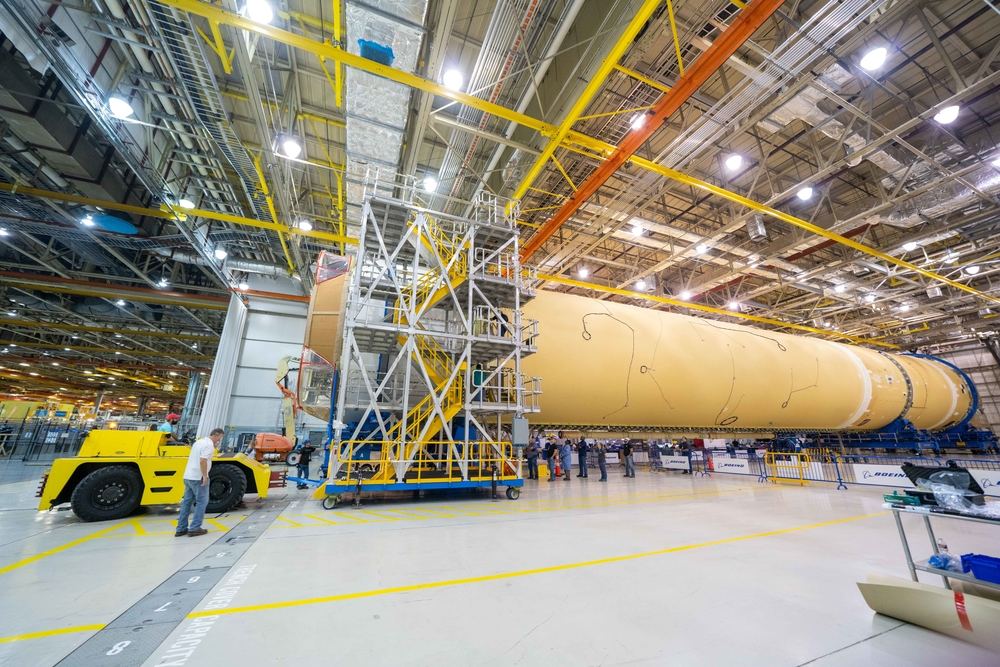
NASA’s Space Launch System (SLS) should be the next generation of rocket, suitable for launching extremely heavy payloads and traveling to deep space on missions such as the planned Moon to Mars mission that begins with the Artemis project. But the SLS project has been troubled, suffering from delays and ballooning costs. Progress is being made, however, and recently NASA shared an update on the status of the rocket.
All five sections which comprise the main structural component of the rocket stage have now been joined by engineers at NASA’s Michoud Assembly Facility in New Orleans. The stage should produce a hefty 2 million pounds of thrust in addition to the two solid rocket boosters which produce a combined 8.8 million pounds of thrust. For reference, a current-generation rocket like a SpaceX Falcon 9 produces about 5 million pounds of thrust at takeoff from its combined 27 Merlin engines.
The core stage of the SLS is 212 feet tall and was completed when the engine section was bolted on. This section is attached to the tank for holding the liquid hydrogen fuel and will house four RS-25 rockets as well as the solid rocket boosters. With the stage now assembled, there’s more work to do to including attaching the engines themselves and connecting them to the propulsion system.
“NASA has achieved a historic first milestone by completing the final join of the core stage structure for NASA’s Space Launch System, the world’s most powerful rocket,” Julie Bassler, the NASA SLS stages manager, said in a statement. “Now, to complete the stage, NASA will add the four RS-25 engines and complete the final integrated avionics and propulsion functional tests. This is an exciting time as we finish the first-time production of the complex core stage that will provide the power to send the Artemis I mission to the Moon.”
NASA expects that the core stage will complete final assembly in December this year, at which point it will be sent to the Stennis Space Center in Mississippi for a first round of testing.


